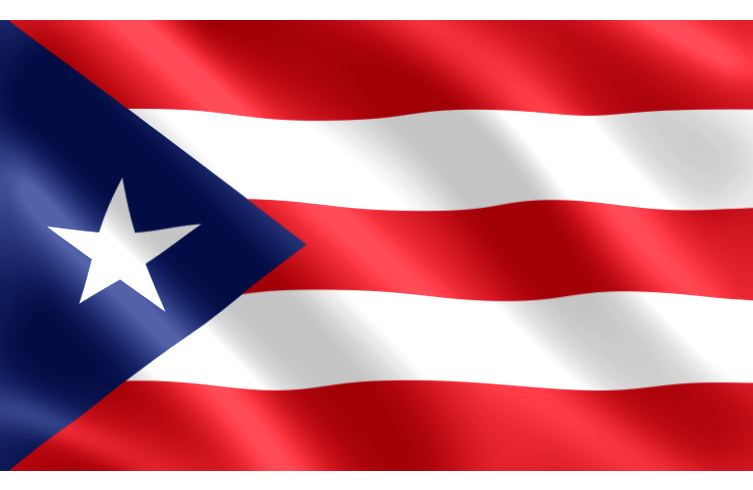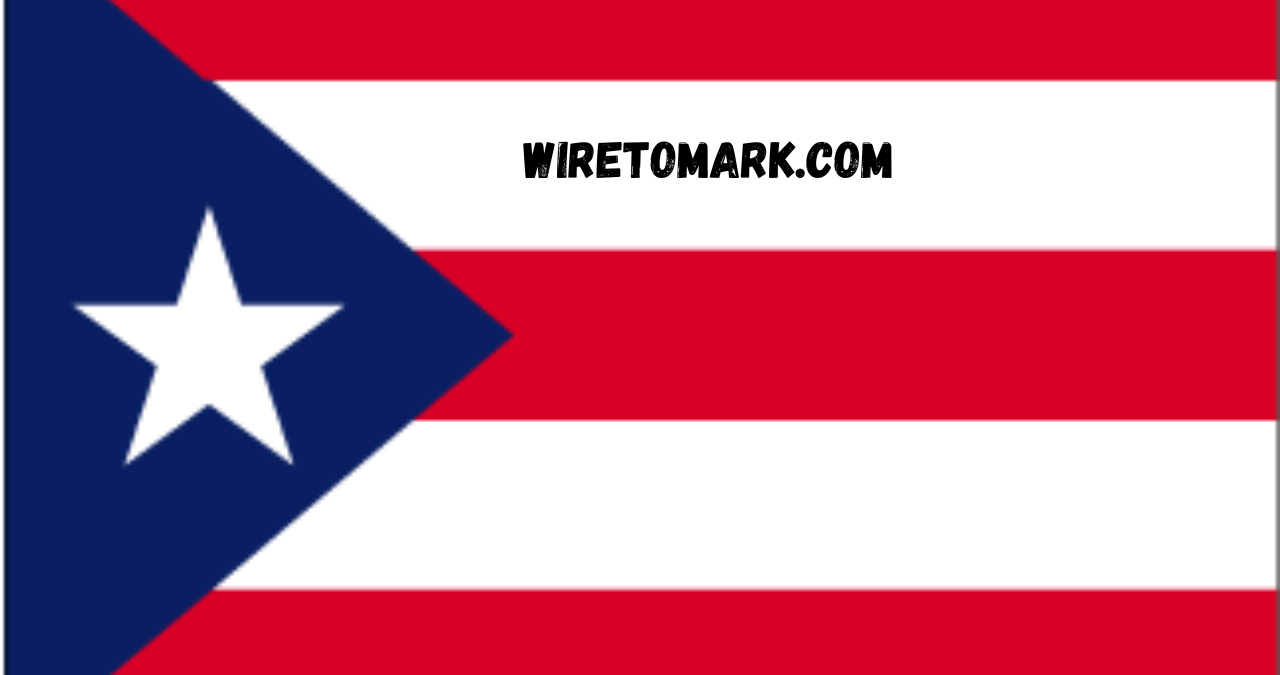The Puerto Rico flag is one of the most powerful and recognizable symbols of cultural pride, history, and unity among Puerto Ricans around the world. It’s more than just a banner of red, white, and blue; it’s a reflection of identity, resilience, and an unbreakable connection to the island’s spirit. Every stripe, every star, and every shade holds meaning that resonates deeply with those who call Puerto Rico home—whether they live on the island or in the diaspora.
From its origins rooted in revolution to its modern-day symbolism of unity and pride, the Puerto Rico flag has evolved to represent far more than a piece of cloth. It stands as a testament to the island’s journey, its people’s courage, and their desire for recognition and respect. Understanding the history and meaning behind this flag allows us to truly appreciate its importance, not only as a political emblem but also as a cultural treasure that carries the soul of Puerto Rico within its folds.
History of the Puerto Rico Flag
The Puerto Rico flag’s origin story is as passionate and vibrant as the island itself. The flag was first conceived during a period of political unrest and hope for independence from Spanish colonial rule. Inspired by the Cuban flag, the Puerto Rican version inverted the colors as a way to show solidarity with Cuba while still asserting its own distinct identity. The blue triangle represented the sky and the ocean surrounding the island, the white star symbolized the Commonwealth of Puerto Rico, and the red and white stripes stood for the blood and victory of the people striving for freedom and peace.
In the late nineteenth century, the flag was banned under Spanish and later U.S. rule. For decades, even displaying it could lead to punishment or imprisonment. It wasn’t until the mid-twentieth century that the flag was officially recognized and adopted as the national symbol of the Commonwealth. This long journey from suppression to official recognition makes the Puerto Rico flag not just a banner of pride, but a symbol of resistance and survival. Today, it waves proudly over government buildings, homes, and festivals, representing a nation’s spirit that refuses to fade.
Design and Meaning of the Puerto Rico Flag
The design of the Puerto Rico flag is both simple and deeply meaningful. It features five alternating red and white stripes, with a blue triangle on the left side that contains a single white star. Each color and shape on the flag has its own symbolism that connects directly to the island’s history and aspirations. The red stripes represent the blood shed by brave men and women who fought for the island’s freedom. The white stripes symbolize peace, liberty, and the strength of the people’s commitment to justice. The blue triangle represents the sky and coastal waters surrounding Puerto Rico, while the single white star stands for the island itself—united, resilient, and filled with hope.
Interestingly, the shade of blue used in the Puerto Rico flag has changed over time, reflecting the island’s evolving political relationship with the United States. The original version used a light blue similar to Cuba’s flag, symbolizing solidarity with their neighboring island. Later, a darker blue shade was introduced to align with the blue found in the U.S. flag. While this change sparked debates among historians and patriots, it also reinforced the flag’s role as a living symbol that evolves along with the people it represents. Regardless of the shade, the flag remains a beloved emblem of Puerto Rican identity and heritage.
Cultural Significance of the Puerto Rico Flag
The Puerto Rico flag holds immense cultural importance far beyond its political meaning. It represents unity among Puerto Ricans living on the island and in the diaspora—particularly in cities like New York, Orlando, and Chicago, where Puerto Rican communities thrive. The flag is a source of pride at parades, concerts, and festivals, especially during events like the Puerto Rican Day Parade, where thousands come together to celebrate their roots. For many, waving the flag is a way to say, “We are here, and we are proud.”
Beyond celebrations, the Puerto Rico flag is a symbol of resilience during times of hardship. After devastating hurricanes, earthquakes, and economic challenges, the image of the flag has often become a rallying cry for unity and hope. Whether displayed on murals, social media profiles, or community centers, the flag serves as a reminder that no matter the adversity, the Puerto Rican spirit cannot be broken. It’s this deep emotional connection that makes the flag a living, breathing symbol of the island’s enduring strength.
The Puerto Rico Flag in Modern Times
Today, the Puerto Rico flag continues to play a vital role in shaping the island’s identity. Its presence is everywhere—from government buildings to clothing, tattoos, and art. For many young Puerto Ricans, the flag has become a way to reconnect with their heritage and express their cultural pride, especially for those born or raised outside of the island. It’s a statement of belonging and a visual declaration that their roots remain strong no matter where life takes them.
Social media has amplified the visibility of the Puerto Rico flag, turning it into a global symbol of cultural pride. During times of political debate or crisis, people across the world share the flag as a show of solidarity and awareness. The image of the flag flying high after Hurricane Maria or appearing on protest signs during government demonstrations highlights its power as both a cultural and political icon. In modern times, the flag doesn’t just represent a place—it represents a people’s ongoing story.
Symbolism Beyond Politics

While the Puerto Rico flag carries political weight, its meaning extends far beyond that realm. It symbolizes love for the island’s natural beauty, its music, food, and warm-hearted people. It’s often seen in the background of salsa performances, reggaeton music videos, and sports events, adding a touch of identity and pride to every scene. From Olympic athletes draping it over their shoulders to artists including it in their stage designs, the flag has become synonymous with excellence and representation.
For many Puerto Ricans abroad, the flag also serves as a link to home. It brings comfort, nostalgia, and pride, reminding them of their family, traditions, and roots. It’s a symbol that transcends distance, uniting Puerto Ricans around the world under one shared identity. Whether displayed in a car window, worn as a bandana, or hung proudly on a wall, the flag connects generations and tells a story of perseverance and love for the island.
The Puerto Rico Flag and Identity
Identity is deeply tied to the Puerto Rico flag. It embodies what it means to be Puerto Rican—a blend of indigenous Taíno, African, and Spanish heritage. The flag represents this fusion of cultures that makes the island so rich and diverse. It serves as a reminder that Puerto Rican identity is not defined by political status but by culture, language, and community.
The flag also challenges the idea of what it means to belong. For Puerto Ricans living in the United States, it’s a declaration of pride in their heritage and an expression of resilience in maintaining their culture within a larger, diverse society. The flag, in this way, becomes more than just a national emblem—it becomes a personal and collective statement of belonging, strength, and unity.
How the Puerto Rico Flag Inspires Art and Expression
Artists and creators have long drawn inspiration from the Puerto Rico flag. It appears in murals, paintings, fashion, and music, often serving as a tool of expression and empowerment. Murals across San Juan and other cities use the flag’s design to depict messages of hope, resistance, and pride. Its vibrant colors and bold symbolism make it an artistic muse for those who want to capture the essence of Puerto Rican culture.
Fashion designers also use the flag to celebrate the island’s beauty and vibrancy. From streetwear to haute couture, the flag’s design elements inspire creativity and cultural representation. Musicians, too, frequently reference the flag in their lyrics, album covers, and stage performances. Whether it’s Bad Bunny waving it during a concert or Jennifer Lopez incorporating it into a performance, the flag remains a timeless expression of identity and pride.
Respecting the Puerto Rico Flag
Respect for the Puerto Rico flag goes hand in hand with understanding its meaning. It should be displayed with dignity, never touching the ground or being used in a disrespectful way. Many Puerto Ricans take great pride in displaying the flag properly, ensuring it remains a symbol of honor. The flag represents not just a political entity but the heart and soul of an entire culture, so treating it with respect is an essential part of honoring that heritage.
During national celebrations, Independence Day events, and public gatherings, the flag is displayed proudly. It’s not uncommon to see it flying beside the U.S. flag, symbolizing both unity and distinction. No matter where it appears, the Puerto Rico flag stands tall as a beacon of hope and identity for Puerto Ricans everywhere.
Conclusion
The Puerto Rico flag is more than a national emblem—it’s a living story. Every fold carries generations of struggle, resilience, and pride. It’s a bridge between the past and the present, linking Puerto Ricans across the world through shared heritage and identity. From its revolutionary beginnings to its role in modern culture, the flag continues to represent hope, strength, and unity.
Whether flown at home, painted on walls, or worn proudly during celebrations, the flag reminds everyone that being Puerto Rican is something to cherish. It’s a symbol that continues to inspire, bringing together hearts from across the globe under one beautiful, powerful banner.
FAQs
Q1: What do the colors on the Puerto Rico flag represent?
The red stripes represent the blood of those who fought for liberty, the white stripes symbolize peace and freedom, the blue triangle stands for the sky and ocean, and the single white star represents the island of Puerto Rico.
Q2: Who designed the Puerto Rico flag?
The flag was designed by the Puerto Rican Revolutionary Committee in New York in the late nineteenth century, inspired by the Cuban flag with inverted colors to signify solidarity and distinction.
Q3: When was the Puerto Rico flag officially adopted?
The flag was officially adopted as the national symbol of the Commonwealth of Puerto Rico in the mid-twentieth century, following years of prohibition and struggle for recognition.
Q4: Why is the Puerto Rico flag so important to Puerto Ricans?
The flag symbolizes cultural identity, unity, and pride. It represents the island’s resilience, history, and hope, serving as a reminder of the strength and determination of Puerto Rican people.
Q5: Has the color of the blue triangle changed over time?
Yes, the shade of blue has changed several times, moving from a lighter shade to a darker one to match the U.S. flag. Despite this, the meaning and pride behind the flag remain constant.



